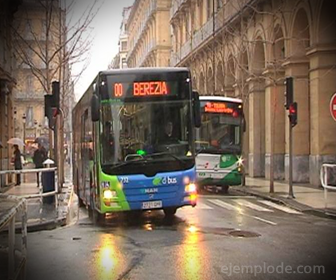The Travels of Christopher Columbus
Universal History / / July 04, 2021
Christopher Columbus's first voyage
On August 3, 1492, three ships left Puerto de Palos in Spain: the Santa María, in which Columbus was traveling, the Pinta and the Niña. Rodrigo de Triana was the lookout of the caravel called La Pinta, which on October 12 sighted the continent. Christopher Columbus was sure that they had arrived on one of the islands on the east coast of Asia. Later it was learned that the natives named the island Guanahaní. The Spanish took possession of the island in favor of the Crown of Spain and named it San Salvador. The adventurers continued their journey to the present-day Bahamas islands and on their journey they discovered new islands, among which was Cuba, baptized as Juana and Haiti called by the expedition members as La Spanish. In March 1943, Columbus returned to Spain and from the same Port of Palos people managed to observe the return of the caravels. Only the Santa María was missing, since a year before a strong storm left the ship out of service and her crew built a fort on the island of Hispaniola with its salvaged wood. This fort, the first of many others that the Spanish would build in the new continent, was called by Columbus as La Navidad.
Second voyage of Christopher Columbus
Christopher Columbus was received by the kings of Spain with all the honors for his first trip. Seduced by treasures and riches in the new lands, they gave the order to Columbus to organize a new expedition, but this time made up of a total of 17 ships and more than a thousand men. The Spanish returned to the new world with the order to try to colonize all the discovered lands and transform the natives of them to the Catholic religion. After 40 days of sailing, Columbus and his navigators discovered Puerto Rico and the Antilles. Upon their arrival on the island of Hispaniola they observed Fort La Navidad in ruins so they opted for build a new fort called Isabela, which was the first European city in the New World. In April 1494, Christopher Columbus continued with the exploration of the Antilles Sea with only three caravels, the rest had already returned to Spain. Despite all his efforts to reach the Indies, Columbus only found one new island: Jamaica. When he returned to Fort Isabela he faced a great inconvenience, the Spaniards who had remained there forced the Indians to deliver the gold to them and in several cases the Indians were murdered. Later, Columbus is denounced in court for being a bad administrator of the new colonies of the Indies. and for this reason in July 1497 he returned to Spain to organize his defense before the Catholic Monarchs of Spain.
Third voyage of Christopher Columbus
After discussing everything that happened, the Catholic Monarchs accept a new expedition from Columbus. The navigator leaves again for America on May 30, 1498 with six ships from San Lucar de Barrameda. At the end of July he arrives on the island of Trinidad and then touches the coast of Venezuela. Convinced of being on the islands of Asia, Columbus and his companions set foot on the South American continent for the first time. In August he marches to Hispaniola, which had been under the orders of Bartolomé and Diego, his brothers, and discovers the islands of Tobago and Granada. Already in Hispaniola, Christopher Columbus found a disastrous climate: most of the Spanish colonists had gone mad with greed and his brother Bartolomé had ordered cruel acts. As a result, many hangings were ordered but the cruel climate remained the same. In October 1498, Columbus sent a letter to the Catholic Monarchs requesting collaboration in order to control the prevailing situation. In August 1500, Francisco de Bobadilla was sent to Hispaniola by the Kings of Spain while Christopher Columbus and his brothers were arrested and forced to return to Spain.
Fourth voyage of Christopher Columbus
Christopher Columbus was released by the Court in consideration of his great service to the Crown of Spain. He obtained a new collaboration from the kings and on May 11, 1502 he left with his brother Bartolomé and his son Hernando from Cádiz in command of four ships and about 150 crew members. Their purpose was to find the way to the spices of Asia, but on the way they suffer a great hurricane that causes them to lose three ships. Despite this, the trip continued and on the first of August the expeditionists arrived in Central America very close to Honduras. They border the coasts of Nicaragua, Costa Rica and Panama, and in December of that year he discovers the Panama Canal where they search for gold without success. In the month of September they return from Hispaniola and arrive in San Lúcar de Barrameda on November 7, 1504. It was the last trip of Christopher Columbus since shortly after his arrival, Queen Elizabeth I died and the king took away all his support. On May 20, 1506, Columbus died in the city of Valladolid, fully believing that he had arrived. to the Indies and without real knowledge of the great importance that all his discoveries.

